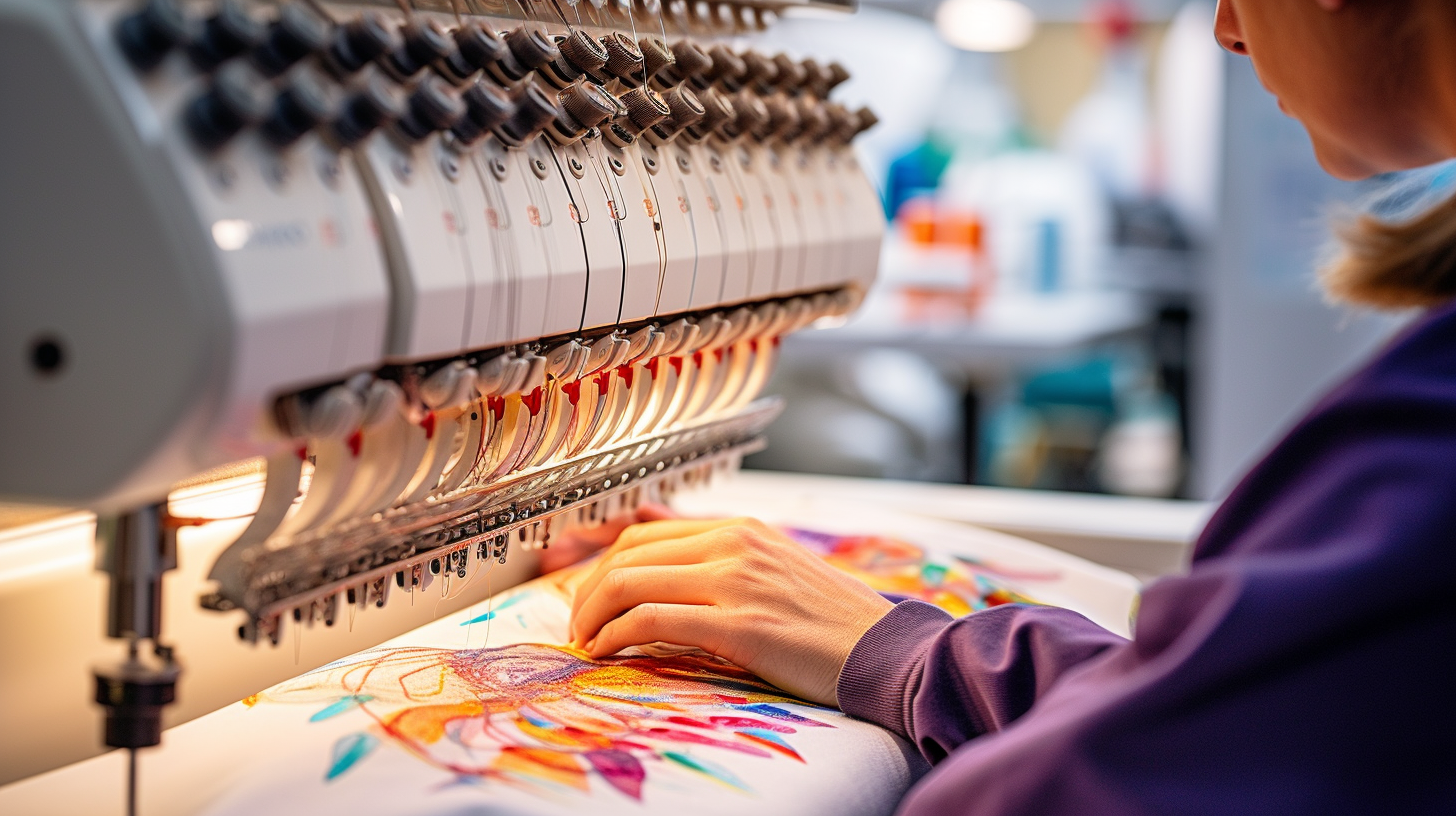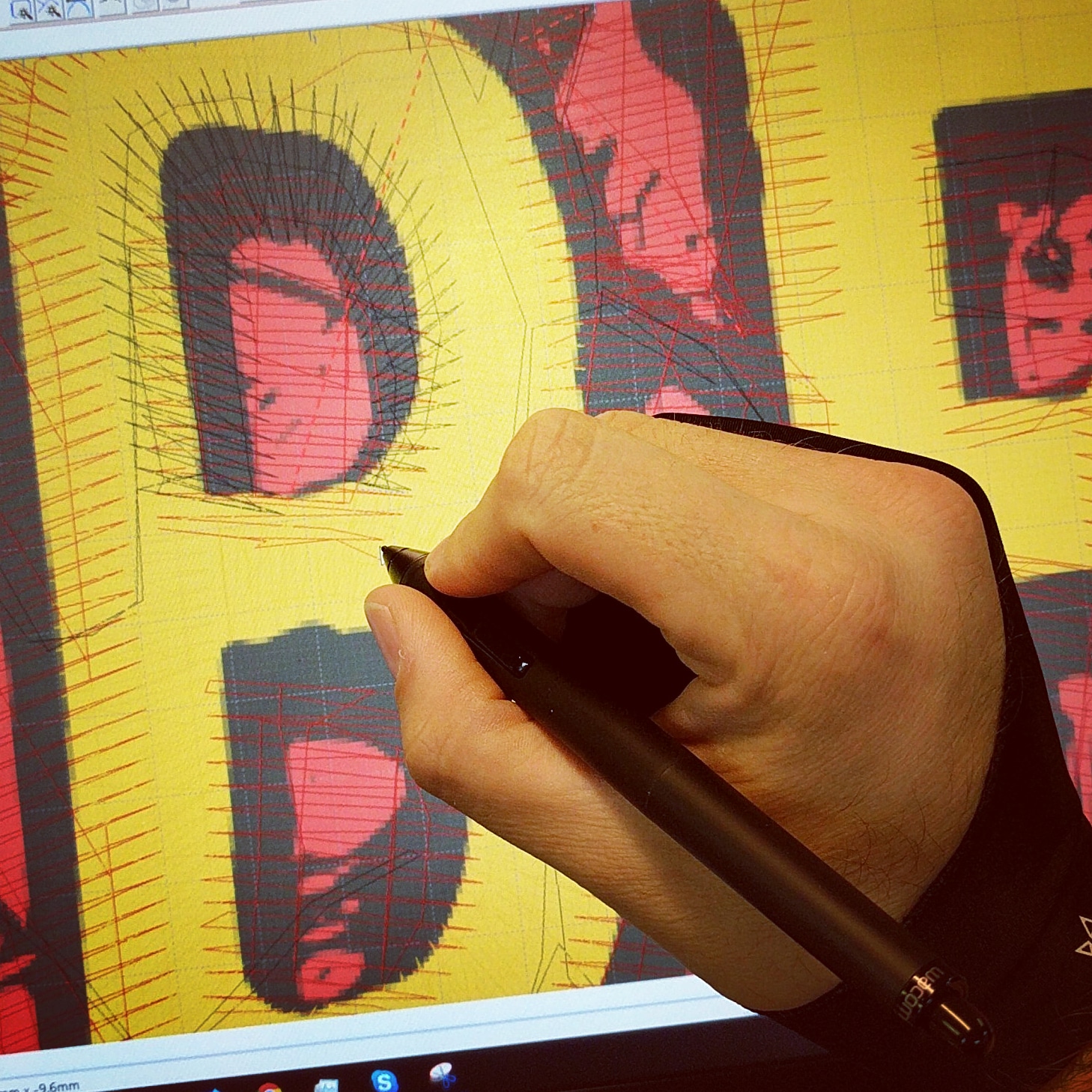Top-Rated Digitizing for Embroidery: Perfect Stitch Every Time
Top-Rated Digitizing for Embroidery: Perfect Stitch Every Time
Blog Article
Understanding the Embroidery Digitizing Process: Your Ultimate Guide
Needlework digitizing is a careful craft that requires accuracy and expertise to translate intricate designs right into digital formats for equipment embroidery. As craftsmens embark on this trip to grasp the embroidery digitizing process, a detailed understanding of the essentials establishes the structure for quality. Nonetheless, beyond the basic expertise lies a world of advanced software application, specialized devices, and nuanced strategies waiting to be checked out. By diving right into the subtleties of digitizing, one can unlock a globe of creative opportunities and elevate their needlework jobs to new elevations.

Understanding Embroidery Digitizing Basics
Embroidery digitizing fundamentals form the structure upon which complex layouts are equated into machine-readable layouts for accurate stitching. This initial step in the needlework digitizing procedure is essential for making certain that the final stitched product is a loyal representation of the original layout. Understanding embroidery digitizing essentials involves realizing crucial principles such as stitch kinds, sew instructions, density, underlay, and pull compensation.
Stitch types play a vital function in establishing the aesthetic and textural end result of the stitched layout. By selecting the ideal stitch kind, whether it be satin, fill, or running stitch, digitizers can accomplish the desired result and improve the total high quality of the needlework. Additionally, sew instructions influences the flow and measurement of the design, while thickness identifies the spacing and coverage of the stitches.
Moreover, rug stitching gives stability to the style by protecting the fabric and stopping distortion during the embroidery process. Draw compensation is one more necessary factor to consider to combat the all-natural propensity of fabric to contract when sewn. Understanding these needlework digitizing essentials is basic for creating professional-quality embroidered products.
Picking the Right Digitizing Software
Choosing the proper digitizing software is a crucial choice that substantially influences the performance and high quality of the needlework digitizing process. Digitizing for Embroidery. When selecting the right digitizing software, it is necessary to take into consideration aspects such as the complexity of layouts you intend to create, the user-friendliness of the software program, the degree of client assistance used, and the compatibility with your embroidery machine
There are various digitizing software alternatives offered out there, ranging from basic programs for novices to sophisticated software for specialist digitizers. Some popular choices consist of Wilcom EmbroideryStudio, Hatch Needlework Software, and PulseID. These software packages provide a vast array of devices and functions to aid you create complex styles easily.
Before deciding, it is recommended to explore the various software program options via complimentary trials or demos to determine which one finest suits your needs. In addition, reviewing testimonials and seeking recommendations from experienced digitizers can give valuable understandings into the strengths and weak points of each software program plan (Digitizing for Embroidery). By very carefully reviewing your requirements and comparing the attributes of various digitizing software program, you can make an enlightened option that boosts your embroidery digitizing workflow
Digitizing Devices and Techniques

Optimizing Style Setup for Embroidery
Mastering the ins and outs of layout setups is essential in achieving ideal outcomes in the embroidery digitizing procedure, structure upon the structure laid by recognizing digitizing devices and techniques. When maximizing design settings for needlework, it is important to take into consideration elements such as stitch type, thickness, underlay, pull settlement, and enrollment. Sew kind choice affects the general feel and look of the design, with options like satin, fill, and running stitches offering various textures and results. Thickness refers to the spacing and density of stitches, affecting the style's coverage and durability. Appropriate underlay stitching gives stability and prevents material distortion, especially for complicated layouts or on elastic products. Draw payment readjusts for material stretch throughout sewing, making sure exact design replication. Enrollment setups align different components of the layout properly, keeping general layout honesty. By fine-tuning these style setups, embroiderers can boost the top quality and accuracy of their stitched productions.

Troubleshooting Common Digitizing Issues
When encountering typical digitizing problems during the embroidery process, it is crucial to understand Extra resources the origin triggers and implement reliable remedies without delay. One usual issue is stitch thickness concerns, where stitches might be also dense, creating the textile to tighten, or also sparse, resulting in voids in the layout. Readjusting the stitch density setups in the digitizing software program can aid settle this issue.
Another constant challenge is string breaks during the embroidery process. This can happen due to various factors such as inaccurate stress setups, boring needles, or utilizing low-grade string. Guaranteeing proper maintenance of the embroidery machine, consisting of routine needle changes and stress adjustments, can decrease the occurrence of string breaks.
In addition, layout registration mistakes can lead to misaligned aspects within the needlework style. Examining the design placement in the digitizing software program and making required modifications before stitching can help in avoiding this issue. By dealing with these typical digitizing problems without delay and efficiently, you can ensure a smoother embroidery procedure and high-grade ended up products.
Verdict
Finally, understanding the needlework digitizing process calls for a strong understanding of the essentials, the ideal option of software application, and understanding of devices and methods. Maximizing layout setups and fixing usual digitizing problems are critical action in making certain high-quality needlework outcomes. By following these actions faithfully, one can attain accuracy and performance in the digitizing procedure.
Report this page